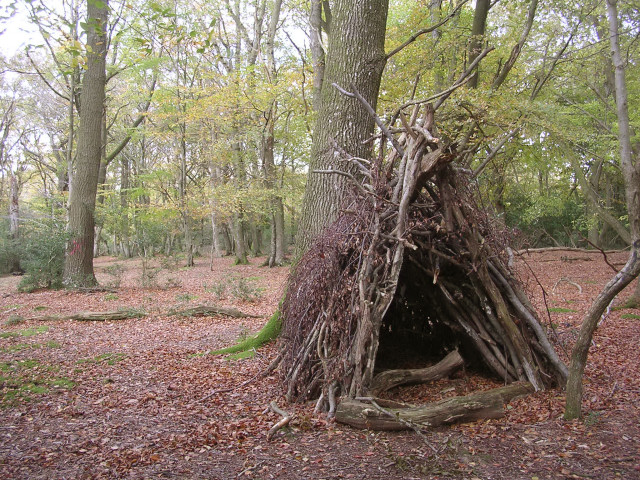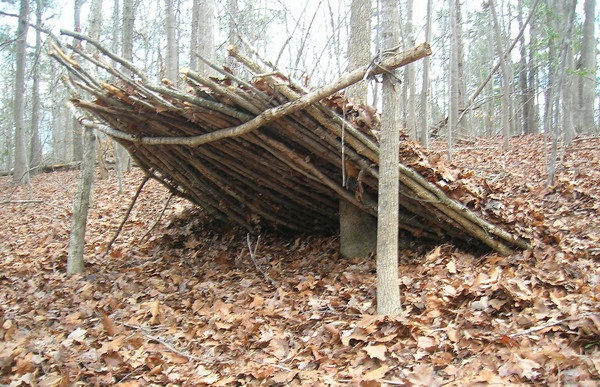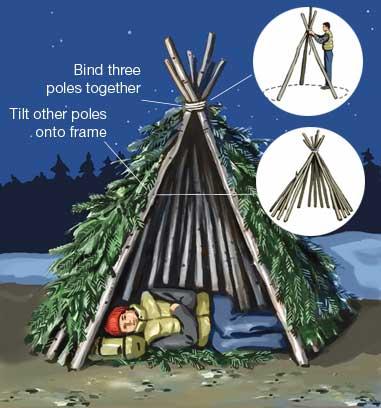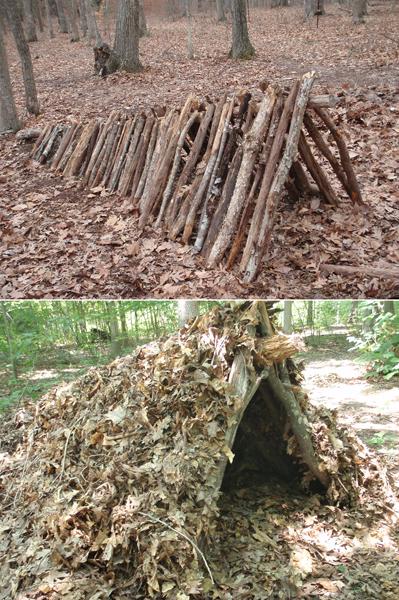
Surviving out in the wilderness is a huge achievement, and without the help of Mother Nature to help us in an extreme situation – we would be dead. Trees, grass, rocks, water, it’s all there for us to use, humans are adaptable creatures so we are able to ‘adapt’ to natures way of living, and ultimately survive. I’m going to be showing you how to build a shelter for survival, different types of shelters for different uses, and explaining the utmost importance of having a shelter in the first place because a short day hike through the wilderness can turn into a life threatening situation in a wrong turn of events.
Start With The Barrier You Have On
The clothes on your back are your first line of defense, keep your clothes loose and ventilated to stop condensation buildup, but pack on the layers for extreme warmth.
The Importance Of A Survival Shelter
A survival shelter is your sense of well-being, it will protect you from the elements, especially the COLD. 3 hours without shelter in the freezing cold and you’re setting yourself up for excessive fatigue and weakness, which will bring on exhaustion.
Being exhausted in a survival situation is highly dangerous, an exhausted mind will not think properly – and you will lose your will to survive.
A shelter will keep your mind at ease as well as your sanity. Your shelter will not only protect you from element exposure but will also give you a mental boost, because without a shelter – there is no sanctuary, and your chances of surviving are at an all-time low!
Types Of Shelters
There’s a wide range of different shelters you can build, each have their pros and cons. I will list the commonly-made 1 person shelters below and let you decide which one will suit you.
Leaf Hut
The leaf hut is designed for great waterproofing and insulating quality and is more than enough to keep you safe from the weather and temperature changes.
- Choose a 9 – 12 ft log
- Lean the bottom end up against a tree, rock or stump
- Fork the front of the log with branches to hold it up
- Place tree branches up against the side of the shelter, acting as ribs (on an angle)
- Put the tree branches fairly close to avoid your insulation (leaves) from falling through
- Add 3 feet of insulation, such as grass, ferns, leaves, brush
- Create your bedding with more vegetation, preferably clean ferns, leaves or brush – 8 inches high
It’s best to keep this shelter as small as possible, but enough room to move around. This shelter will hold in heat very well, and can still be heated by a fire at the entrance if you choose to have one.
The Lean-To

Not something I recommend but if you’re pushing for time, this might be your only choice. It’s a perfect choice if you want something quick and easy.
IMO, it’s good for temporary shelter and that’s it. It will protect you, but in the off-chance that the wind changes direction, you’ll no longer be sheltered, and it’s not that good for holding in heat.
- Secure a long, strong pole between two trees
- Cover one side with tree branches, acting as ribs much like the shelter above
- Jam as much vegetation as possible on top of the shelter, maximizing your protection to stop rain from leaking inside
One upside to this shelter, is that it reflects fire very well, if you can get a fire burning near your shelter it will heat you up and keep you warm.
Wiki Up Shelter

This shelter is more of a long-term sanctuary, HOWEVER if you have enough time on your hands this can be put up within 3 hours if you take action and get to work asap.
Your rewards will be doubled, by providing you enough room to sleep and more room to have a fire blazing away.
This type of shelter is sturdy, comfortable, homey, weatherproof and has enough potential to become your sanctuary! Which is what you need if you’re out in the wilderness trying to survive day-by-day.
- Tilt three solid logs in a tripod shape, tie them up in at the top using either piece of string, rope or vines if you don’t have any of those
- However if you can find a log with a Y shape, this can eliminate the need for cordage by tilting the other logs up against the fork
- Now that you have the structure up, it’s time duplicate what you just did by adding more branches against the wedges, until you have covered the entire tripod, leave them close enough so your foliage won’t fall through. Leave an opening area to get in and out, and also a vent at the top for smoke to get out
- Add your foliage around the wiki up shelter to create a thick wall allowing you to keep well-insulated no matter what the whether is
The finished reward

Note: You don’t have to create your wiki up shelter this big, this is just a good example of what you can build using this method 🙂
What Is The Ideal Shelter?
Since it’s most likely to be yourself surviving in the wild, I would recommend you choose a shelter that won’t take too much time and energy to set up. You’re on maximum calorie-saving mode, so spending more energy than you have to is going to make your situation even worse.
Of course it’s completely up to you.
A good rule of thumb to follow:
Lean-To – Your best shelter to make if it’s heading into nighttime and you’re pressed for time
A-frame leaf hut – A great shelter to use if it’s the afternoon and if you still have enough time to spare
Wiki Up – A more long term shelter, however if you can get this bad boy up fast enough, the rewards are huge! Can take 3 hours, maybe more if you’re still a beginner.
What Do I Typically Like The Most?
I’m more interested in long-term shelters, which will keep me sane the entire time I’m lost and give me a home to come back to every night or when it’s time to get some shelter from the rain.
My preferred choice is the Leaf Hut, OR Wiki Up shelter if I have enough time.
Important Notes To Remember
Of course there’s hundreds of different survival shelters that you can try. Above, I have put together a basic outline which you should first follow and try for yourself – try out the waters before you decide to build a bigger and more advanced shelter.
Master what I have prepared for you in this article, when you can get these built fairly quickly and by yourself then I encourage you to try harder and more stable shelters.
Conclusion
If you want to survive in the wild, alone and without any equipment, your first line of defense against the environment IS a shelter.
With no shelter, your odds of surviving have virtually diminished which is why it is important to make your first task (shelter building) a #1 priority.
Learn the basics and your chances of surviving in the great outdoors will improve drastically.


Great Article Brandon,
I used to camp quiet often when I was younger but don’t have time to anymore and I miss it. I watch Bear Grylls all the time to make up for it 🙂 The shelter I like most is the Leaf hut as long as it’s not too windy out 🙂
Hi Sam, that is my favorite shelter as well. It’s nice and warm, not to mention cozy. But what I really like about it, it’s totally camouflaged, especially in the night time. So if you are someone that gets paranoid this one might be for you.
Cheers,
Brandon
im the guy who actually built and lived in this wiki up during the winter of 2014-2015 in southeastern Indiana. thanks for the credit